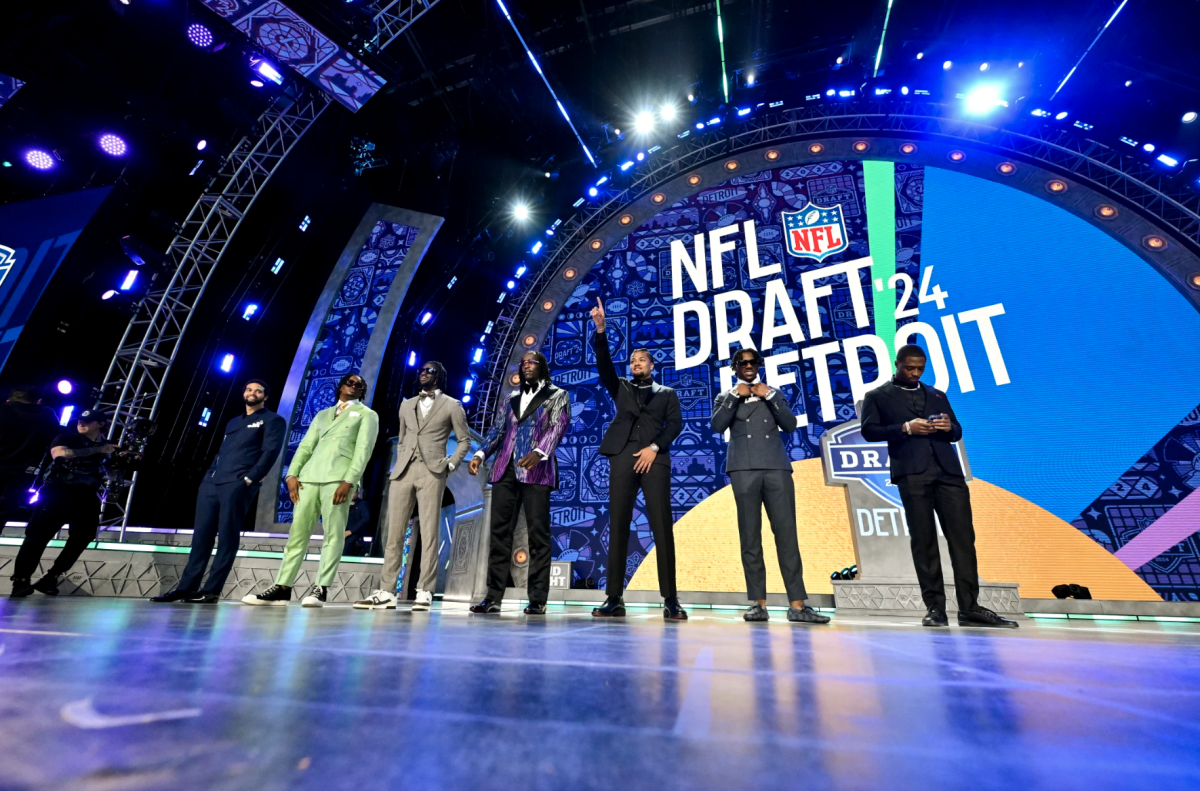SPONSORSHIP, CONTENT OR BOTH?
I believe the world runs on love. Many people believe the world runs on money.
Here’s an example: In 1939, the Radio Corporation of America televised the New York World’s Fair, which included a speech by President Franklin Delano Roosevelt. This was the first time television was broadcast to the public.
By 1941, television companies were already playing advertisements on air. The Bulova Watch Company produced the first television advertisement with the slogan “America runs on Bulova time.”
We all know that any time a technology is invented or expanded upon, new opportunities appear for creating revenue.
A few years go by; Al Gore invents the internet, and the cycle continues. Ads have found a new home on the world wide web.
Celebrity
Much like Roosevelt in his day, celebrities get our eyes on the screen. So, who better to push products than celebrities? Their fame makes them desirable spokespeople in a marketing environment where recognition is everything.
Today, we measure celebrity through social media, and by whether they have an enormous baseline of followers, one that us normal folk could only achieve with the help of massive amounts of Ukrainian bots.
You have probably seen your favorite actor hocking various items with fancy-sounding names on Instagram and Twitter over the last few years. These people may be beautiful or hilarious, but be wary about revering them too much: much like many of us, they will do just about anything for some extra cash.
And in the social media age, the newest iteration of this is “sponcon.”
Sponcon
What is sponcon? It’s short for “sponsored content,” and it really just means advertising that is intended to appear more natural or understated than is typical.
It differs from normal commercials because television is a medium that has been highly popular for over half a century, and the structure of American television incorporates commercial breaks from the actual programming.
Products started being embedded within the programs themselves, like in “Cast Away” with the constant presence of FedEx.
And that structure has become even more streamlined online.
As a celebrity, it is easier to reach an audience without the backdrop of an actual movie or TV set. It’s more direct. It’s more personal.
And now, it’s difficult to distinguish between the content and the ads.
Companies, especially in certain industries such as high-end retail, luxury food items, lifestyle brands and health products, have realized that the opportunity to generate revenue exists everywhere eyeballs and eardrums sense their surroundings.
For some examples of this process being depicted on screen, see the Netflix show “Maniac” or the Mel Gibson and Helen Hunt flick “What Women Want.” (Don’t see “What Women Want,” because it’s terrible. Just read about its premise.)
By associating a company’s brand with a successful Hollywood “influencer-type,” the marketers think they can trick us into buying their random goop or way-too-souped-up car.
Speaking of goop, the actress Gwyneth Paltrow actually started a company called Goop. Stylized as a lifestyle brand, it exists to tout beauty products, trips or health tips and recommends those to the average buyer because it’s got Paltrow’s stamp of approval.
So in theory, every red carpet event she attends increases her potential client base for literally selling Goop.
Money
The situation is getting more and more out of hand.
A Statista study from May 2017 reported that the number of brand sponsored influencer posts on Instagram was 9.7 million in 2016 and is projected to be 32.3 million in 2019.
It is quite lucrative for the celebrities involved. A Business Insider article from July 2018 named Kylie Jenner as the celebrity who brings in the most money with $1 million per Instagram post.
The top 15 people on HopperHQ’s “Instagram Rich List 2018” (the source of the Business Insider article) are homogeneous to say the least: seven are soccer players (one is retired), four are Jenners or Kardashians, three are pop singers and one is actor Dwayne “The Rock” Johnson.
Marketers provide sponsorship deals for celebrities to sell their products, and the amount of followers the celebrity in question has correlates with the profit that they rake in.
Who Fits the Bill?
Many of us remember DJ Khaled’s behemoth, yet inherently tertiary music career. In the last few years he has reinvented his image: he is now known throughout social media as a Snapchat mogul.
Last year, CNBC reported that Coca-Cola Senior Vice President for Content Emmanuel Seuge dubbed him the “King of Snapchat.” In March of that year, Wired reported that Khaled’s Snapchats were being shared with between three and four million people.
Grab that dough before your crown disappears, Khaled.
In addition to traditional celebrities, reality TV “stars” regularly are used as pawns in larger games. They seem especially vulnerable to this phenomenon due to their lack of a defined skillset.
Since the reality television wave of the new millennium, companies can safely bet on these schmucks to deliver product to their niche audience.
Once you see Joe Schmo’s face doing nothing productive for countless hours, he can start to feel like family. And family wouldn’t lie to sell you protein shakes, would they?
Why Does This Work?
In a 2011 article from Psychology Today discussing trends in retail and how they relate to our brains, writer Susan Krauss Whitbourne points to the fact that advertisers have long known about the effects of celebrity in relation to selling products. This status is further increased when the celebrity can flout their supposed expertise in a subject.
And it’s not much of a stretch for people to believe that good-looking people know how to be good-looking.
Whitbourne goes on to cite a Dutch study about why celebrities get people to buy, which studied shoe purchasing based on celebrity affiliation. It concluded that the the better the participant felt about the celebrity, the better they liked the shoes the celebrity endorsed.
Typically, the brands focus on big events like new releases. Then, they have spokespeople push their products in areas where they believe a more integrated advertising style is required.
Where is the Line?
The line between advertisements and plain old content is often unclear, and consumers are the ones tricked into pouring money into products based on those ambiguous endorsements.
In April 2017, the Federal Trade Commission (FTC), a watchdog for consumer protections, set out to curb this problem. It sent over 90 letters to a number of celebrities and social media influencers intended to reset expectations surrounding what they post on social media. Previously, social media advertising has been less scrutinized than television advertising.
In the letter, the FTC stated that when “there is a ‘material connection’ between an endorser and an advertiser … that connection should be clearly and conspicuously disclosed.” A material connection could range from a familial relationship to payments or gifts of the product.
One recent egregious example of this line being hazy is with T-Pain and Delta Air Lines.
Delta Lit
T-Pain is a musical artist from a decade ago who became famous for both his auto-tuned singing and being featured in popular radio jams. He is less famous for his rapping skills, but he is quite skilled at that too.
Therefore, he is also one of the perfect celebrities to be used as part of this scheme. He’s instantly recognizable, is known for a sustained period of producing hit melodies and already has built up a ton of goodwill.
So what happened? Back in late September, he complained about the music selection on a Delta Airlines flight, tweeting out that he now was in a weird mood because he heard Adele playing on the speakers.
Delta’s social media department saw T-Pain’s tweet and responded brazenly, saying that airplane music while boarding should be “a relaxing experience.”
On a subsequent Delta flight (and in a conspicuous twist of fate), T-Pain noticed that the flight attendants played one of his hits, which caused him to post a video of this on his Instagram, declaring “Delta lit.”
Delta, apparently, had gotten on his good side.
Media outlets from USA Today to Billboard to People Magazine covered the clapback and subsequent admission of gratitude by T-Pain. They failed to mention the bored, almost morose way in which he actually spoke in the video.
They left out the fact that the nugget of the story is one flight attendant twisting her butt to a faintly audible “Buy U A Drank” in the background. T-Pain does end up chuckling near the end of the video, but it’s more at the dancing than anything else. He sounds more bored and tired than having any sense of joy.
The whole thing was massively overblown, because: why not? It produces clicks, people like reading about airplanes and people know T-Pain.
Am I accusing Mr. Pain of getting paid under the table by Delta Airlines to perform this charade to make them look better. Yes. Yes, I am. Do I have evidence? Not yet.
What I’m really saying is that companies like Delta desperately desire a connection with celebrity. They think T-Pain makes them look hip, and T-Pain generates stories from tabloid publications which in turn help Delta’s profit margin.
For both T-Pain diehards and casual music listeners alike, he still demands a certain currency. All recognizable figures do.
So on some level, the companies were right, because I care.







